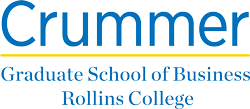How to Write a Top MBA Personal Statement (With Examples)

Working on your MBA application? You aren’t alone. In 2021, over 200,000 students graduated with an MBA degree making it the number one choice for graduate students for the 10th year in a row. And there’s good reason for this. According to the National Center for Education Statistics, post-MBA, grads can earn significantly more at work—experts estimate an additional $20,000 each year depending on the industry.
During the application process, you’ll want to stand out. A well-crafted personal statement will help distinguish you from other applicants. It serves as a powerful tool to showcase your unique experiences, skills, and aspirations to admissions committees. To make a lasting impression, tailor your personal statement to each MBA program you’re applying to, highlighting how your background aligns with their values and goals. For additional support, keep reading for some MBA personal statement examples and guidance.
Understanding the Foundations – Word Count, Templates, and Pricing
When you start your personal statement, keep the word count in mind. Make sure to write your statement succinctly. Templates can give crucial structure to a first draft and make sure you hit necessary points. Finally: is it worth it to hire a professional proofreader? We break down the pros and cons.
Word Count Considerations
A well-written personal statement is often the deciding factor in the business school admissions process. Conveying your thoughts concisely is a crucial skill in the business world, and future peers will be grateful for your brevity.
One strategy is to start with a longer draft and edit it down when revising. Remove unnecessary details and tighten wordy language. Focus on improving the quality of your content over meeting the maximum word count.
Templates as a Starting Point
Templates can help to organize your thoughts. Use them to provide structure and give your writing direction. By planning ahead, you can decide how much space you want to dedicate to each element—this can also help you meet the word count.
Remember: popular templates are popular for a reason, and following them too strictly can make your statement feel rigid and unoriginal. To avoid that pitfall, personalization is key. Your individual experiences, goals, and perspectives are all unique. What would a Master’s in Business Administration mean to you? Don’t be afraid to customize any template to fit your voice.
Professional Proofreading
Graduate schools know what a well-written personal statement looks like—and so do professional proofreaders. Experts can help catch small grammatical errors and improve clarity in your writing. It can be challenging to review personal writing from an objective standpoint. A good proofreader will streamline your writing and ensure overall coherence, improving your odds with your preferred school of business.
Unfortunately, this can be expensive. Pricing for these services can easily cost hundreds of dollars. If hiring one isn’t in the budget, here are some alternatives:
- Find writing groups online or in person. Not only will you receive feedback, you’ll get a better idea of what other personal statements look like. Be prepared to help edit other statements.
- Reach out to peers and mentors. Turn to people who know your voice and can tell when your writing is authentic. Make sure they aren’t afraid to give negative feedback.
- Utilize free online resources. Writing tools like Grammarly or Hemingway help check grammar and sentence structure. They won’t help with essay format and aren’t infallible; double-check any changes they might suggest.
- Read your statement out loud. This can help make sure your statement has a good rhythm and flows naturally.
- Take breaks. Be your own set of fresh eyes. When you’re in the thick of writing, you might glaze over easy-to-spot details while you’re thinking of the big picture. Allow yourself to recharge and clear your head before you get back to it.

Tailoring Your Personal Statement to Top MBA Programs
Make sure to personalize your essays to specific MBA programs. Include details about specific classes and faculty, unique opportunities, and the strengths that make this program stand out.
Then, tie yourself into the narrative. What role would you fill as a graduate student or an alumnus? Consider your own strengths and where they align with this specific program. What career goals could this opportunity help you achieve?
Remember to mention your soft skills and other details that may not show up elsewhere on your application. Finally, shine a spotlight on your unique contributions in past roles.
Write a Captivating Introduction
A beautiful personal statement will be overlooked unless the introduction captivates the audience. You can begin with compelling anecdotes, personal stories, or influential quotes. Tie this introduction into your reason for pursuing an MBA. Make the reader care before launching into your achievements. Then, clearly state why you’re pursuing an MBA.
Example: “From the dynamic intersections of global markets to the intricate strategies driving corporate success, the realm of business has always beckoned to me as a realm of boundless opportunity and perpetual evolution..”
Discuss Academic and Professional Background
Now it’s time to discuss what you’re bringing to the table. It’s okay to brag! Think about any key achievements or acquired skills that are transferable to an MBA program. What motivated you to apply?
Example: “As a project manager at XYZ Corp, I navigated intricate challenges, demonstrating resilience and strategic thinking – skills I am eager to refine in a top-tier MBA program.”
Answer the Questions: Why an MBA? Why Now?
What does an MBA mean for your career goals? Break down your short and long-term goals to answer this essay question. How do the skills you gain from earning an MBA connect to your plan? Research the program you’re applying for and use examples from the curriculum.
Example: “My immediate goal is to transition from project management to strategic consulting, and Crummer’s MBA program’s focus on experiential learning and global business strategy perfectly complements my aspirations.”
Emphasize Soft Skills
Think about moments you demonstrated personal growth or teamwork. Are there any moments you stepped up to lead a project or team? Your past experiences will influence your habits in a graduate school setting.
Example: “Leading a cross-functional team on a high-stakes project not only honed my leadership skills but also taught me the importance of collaborative problem-solving, a cornerstone of Crummer’s MBA program.“
Spotlight Unique Contributions
What sets you apart from other applicants? Moreover, what impact will your unique perspective bring to the MBA cohort? Explain how your background will enrich the learning environment. Detail personal qualities and experiences that showcase your value.

Key Elements for a Powerful Personal Statement
Take a holistic approach to strike the right chord in your personal statement. Give admissions committees a more concrete impression of you. Weave in your qualifications, experiences, and aspirations. Don’t just mention your professional achievements—detail all of your positive qualities.
Showcase Work Experience
Be strategic when discussing your real-world work experience. If you can, including measurable results is a great way to show your professional impact. Earnings numbers, statistics, and other metrics will show off your professional experiences.
Articulate Career Goals and Aspirations
When discussing career goals for an MBA application, detail your short and long-term objectives clearly. Ambiguity can weaken your statement’s impact. Whether you’re joining a family business, starting your own business, or looking to go abroad for international business you should discuss how you see yourself navigating the business world. Connect these career aspirations to the MBA program.
Incorporate Extracurricular and Real-World Experiences
Touch on any extracurricular experiences like internships or entrepreneurship. Explain how these real-world experiences impacted your analytical skills, business acumen, and decision-making. If you’re an entrepreneur, touch on your journey or discuss the vision for your next startup.
You can also talk about moments where you demonstrated leadership and communication skills. Teamwork is critical to business leaders. Reflect on your leadership experience—the successes you’ve won and the lessons you learned.

Maintain Authenticity
Write authentically. Admissions officers want genuine stories. Give readers a reason to empathize with you. Overly formal and generic language can depersonalize your statement and keep readers at arm’s length.
Also, use conversational language. If something sounds clunky or unnatural, it probably also reads that way. Plus, the way you speak naturally showcases your personality. While you should always use proper grammar, don’t suck the life out of your statement in the name of sounding more “academic.” Use this opportunity to demonstrate your communication skills.
Navigating Common Challenges
Crafting your personal statements can be challenging! Let’s answer some FAQs.
How Do I Balance the Personal and Professional Aspects?
Be intentional about what you choose to mention from your personal life. Use elements that either contrast or emphasize your professional experience. How does your background influence your business philosophy? Make sure to keep a professional tone and align your statement with the admissions committee’s expectations and be prepared for any questions the interviewer could ask.
How Do I Handle Sensitive Topics?
If you’re writing about a sensitive topic, do so thoughtfully. You don’t know what type of people will be reading your statement, so be considerate and intentional about any details you choose to share.
However, your application essay should be a reflection of you. Sensitive subjects often play a major role in personal growth and development. Discuss what you learned from this challenging experience and how it influenced you.
How Do I Make My Writing Stand Out?
We’ve touched on all of the story elements you need—now trim the fat. Avoid common clichés and generic statements. Common phrases will dilute the unique perspectives in your personal statement. Make sure the language aligns with you. Avoid language that could apply to everyone when possible.
Other MBA Application Process Essentials – GMAT Score, GPA, and Statement of Purpose
The MBA application process is multifaceted and holistic. Alongside your statement, admissions committees also consider your GMAT scores and GPA. GMAT scores are used to gauge applicants’ aptitude for business studies, while GPA showcases your readiness for MBA rigor. If you have a lower score in either category, address these challenges by highlighting your other strengths, relevant experience, and resiliency. Remember: committees consider the entire application, not just scores.
The other factor in the application process is your Statement of Purpose or SOP. This will complement your personal statement. Make sure your SOP articulates your academic and career goals without echoing your other application essay. Avoid redundancy. Focus on the future: link the MBA program to your long-term plan. Take a forward-looking perspective and demonstrate how the MBA will work as a natural progression in your life.
Conclusion
Your personal statement should be as unique as you are. Start with a compelling narrative and a plan. Proofread your essay, and don’t be afraid to seek help from peers or professionals. Explain how your personal and professional life gives you the necessary skills to thrive at your desired program and be specific about what you want to do there. This is your chance to differentiate yourself from other applicants—take advantage!
Crummer is the #1 ranked MBA program in Florida. You can learn more about what we offer and when you’re ready, start working on your application.

